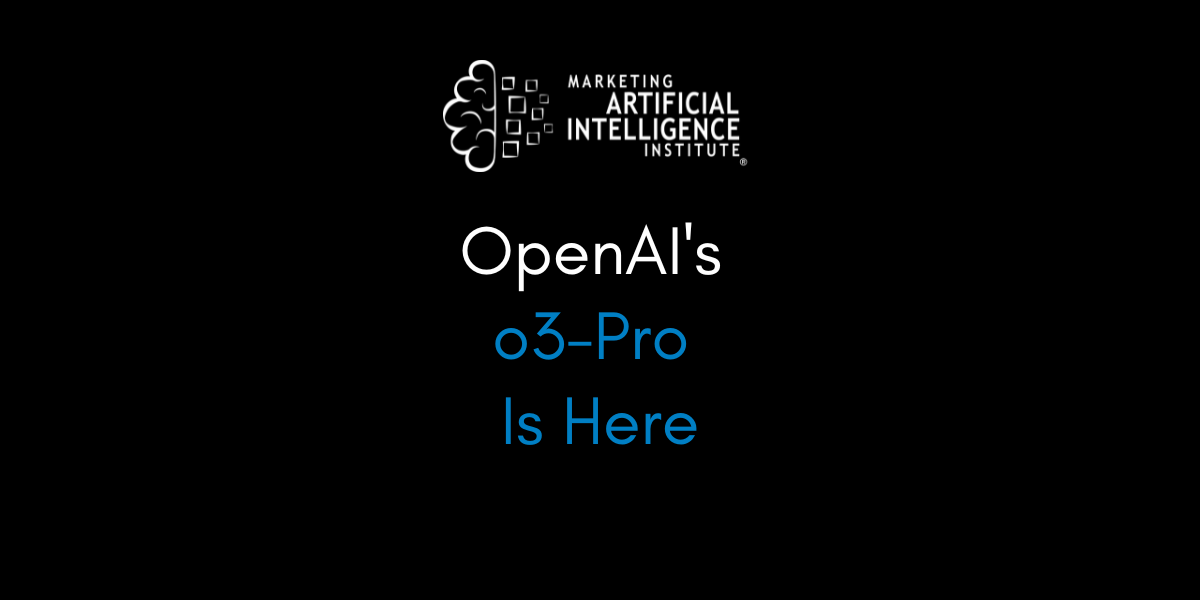Performance(1750266178042800)
As a third-year computer science student, I recently encountered a Rust framework that completely revolutionized my understanding of "efficient" and "modern" web development while exploring various Web frameworks. Today, I want to share my deep experience with this "next-generation web engine" as an explorer, combining my "ten-year veteran editor's" pickiness with words and a "ten-year veteran developer's" exacting standards for technology, along with its awe-inspiring path to performance supremacy. Framework Architecture and Design Philosophy Core Architecture Overview The framework's architecture is built upon several key principles that distinguish it from traditional web frameworks: Zero-Copy Design: Minimizes memory allocations and copying operations Async-First Architecture: Built on Tokio runtime for optimal concurrency Type-Safe Abstractions: Leverages Rust's type system for compile-time guarantees Modular Middleware System: Flexible request/response processing pipeline Basic Server Setup use hyperlane::*; #[tokio::main] async fn main() { let server = Server::new(); server.host("127.0.0.1").await; server.port(8080).await; server.route("/", hello_world).await; server.run().await.unwrap(); } #[get] async fn hello_world(ctx: Context) { ctx.set_response_status_code(200) .await .set_response_body("Hello, World!") .await; } Advanced Routing System The framework supports both static and dynamic routing with regex capabilities: // Static routing server.route("/api/users", get_users).await; // Dynamic routing with parameter extraction server.route("/api/users/{id}", get_user_by_id).await; // Regex-based routing for validation server.route("/api/users/{id:\\d+}", get_user_by_id).await; server.route("/files/{path:^.*$}", serve_file).await; async fn get_user_by_id(ctx: Context) { let user_id = ctx.get_route_param("id").await; let user = find_user_by_id(user_id).await; ctx.set_response_body_json(&user).await; } Middleware System Architecture Request/Response Middleware Pattern The framework implements a sophisticated middleware system that allows for cross-cutting concerns: async fn auth_middleware(ctx: Context) { let token = ctx.get_request_header("authorization").await; if let Some(token) = token { if validate_token(&token).await { return; // Continue processing } } // Authentication failed ctx.set_response_status_code(401) .await .set_response_body("Unauthorized") .await; } async fn logging_middleware(ctx: Context) { let start_time = std::time::Instant::now(); let method = ctx.get_request_method().await; let path = ctx.get_request_path().await; // Process request... let duration = start_time.elapsed(); println!("{} {} - {}ms", method, path, duration.as_millis()); } // Register middleware server.request_middleware(auth_middleware).await; server.response_middleware(logging_middleware).await; CORS Middleware Implementation pub async fn cross_middleware(ctx: Context) { ctx.set_response_header(ACCESS_CONTROL_ALLOW_ORIGIN, ANY) .await .set_response_header(ACCESS_CONTROL_ALLOW_METHODS, ALL_METHODS) .await .set_response_header(ACCESS_CONTROL_ALLOW_HEADERS, ANY) .await; } Timeout Middleware Pattern async fn timeout_middleware(ctx: Context) { spawn(async move { timeout(Duration::from_millis(100), async move { ctx.aborted().await; ctx.set_response_status_code(200) .await .set_response_body("timeout") .unwrap(); }) .await .unwrap(); }); } Real-Time Communication Capabilities WebSocket Implementation The framework provides native WebSocket support with automatic protocol upgrade: #[ws] #[get] async fn websocket_handler(ctx: Context) { loop { let message = ctx.get_request_body().await; let response = process_message(&message).await; let _ = ctx.set_response_body(response).await.send_body().await; } } // Client-side JavaScript const ws = new WebSocket('ws://localhost:60000/websocket'); ws.onopen = () => { console.log('WebSocket opened'); setInterval(() => { ws.send(`Now time: ${new Date().toISOString()}`); }, 1000); }; ws.onmessage = (event) => { console.log('Receive: ', event.data); }; Server-Sent Events (SSE) Implementation pub async fn sse_handler(ctx: Context) { let _ = ctx .set_response_header(CONTENT_TYPE, TEXT_EVENT_STREAM) .await .set_response_status_code(200) .await .send() .await; for i in 0..10 { let _ = ctx .set_response_body(format!("data:{}{}", i, HTTP_DOUBLE_BR))

As a third-year computer science student, I recently encountered a Rust framework that completely revolutionized my understanding of "efficient" and "modern" web development while exploring various Web frameworks. Today, I want to share my deep experience with this "next-generation web engine" as an explorer, combining my "ten-year veteran editor's" pickiness with words and a "ten-year veteran developer's" exacting standards for technology, along with its awe-inspiring path to performance supremacy.
Framework Architecture and Design Philosophy
Core Architecture Overview
The framework's architecture is built upon several key principles that distinguish it from traditional web frameworks:
- Zero-Copy Design: Minimizes memory allocations and copying operations
- Async-First Architecture: Built on Tokio runtime for optimal concurrency
- Type-Safe Abstractions: Leverages Rust's type system for compile-time guarantees
- Modular Middleware System: Flexible request/response processing pipeline
Basic Server Setup
use hyperlane::*;
#[tokio::main]
async fn main() {
let server = Server::new();
server.host("127.0.0.1").await;
server.port(8080).await;
server.route("/", hello_world).await;
server.run().await.unwrap();
}
#[get]
async fn hello_world(ctx: Context) {
ctx.set_response_status_code(200)
.await
.set_response_body("Hello, World!")
.await;
}
Advanced Routing System
The framework supports both static and dynamic routing with regex capabilities:
// Static routing
server.route("/api/users", get_users).await;
// Dynamic routing with parameter extraction
server.route("/api/users/{id}", get_user_by_id).await;
// Regex-based routing for validation
server.route("/api/users/{id:\\d+}", get_user_by_id).await;
server.route("/files/{path:^.*$}", serve_file).await;
async fn get_user_by_id(ctx: Context) {
let user_id = ctx.get_route_param("id").await;
let user = find_user_by_id(user_id).await;
ctx.set_response_body_json(&user).await;
}
Middleware System Architecture
Request/Response Middleware Pattern
The framework implements a sophisticated middleware system that allows for cross-cutting concerns:
async fn auth_middleware(ctx: Context) {
let token = ctx.get_request_header("authorization").await;
if let Some(token) = token {
if validate_token(&token).await {
return; // Continue processing
}
}
// Authentication failed
ctx.set_response_status_code(401)
.await
.set_response_body("Unauthorized")
.await;
}
async fn logging_middleware(ctx: Context) {
let start_time = std::time::Instant::now();
let method = ctx.get_request_method().await;
let path = ctx.get_request_path().await;
// Process request...
let duration = start_time.elapsed();
println!("{} {} - {}ms", method, path, duration.as_millis());
}
// Register middleware
server.request_middleware(auth_middleware).await;
server.response_middleware(logging_middleware).await;
CORS Middleware Implementation
pub async fn cross_middleware(ctx: Context) {
ctx.set_response_header(ACCESS_CONTROL_ALLOW_ORIGIN, ANY)
.await
.set_response_header(ACCESS_CONTROL_ALLOW_METHODS, ALL_METHODS)
.await
.set_response_header(ACCESS_CONTROL_ALLOW_HEADERS, ANY)
.await;
}
Timeout Middleware Pattern
async fn timeout_middleware(ctx: Context) {
spawn(async move {
timeout(Duration::from_millis(100), async move {
ctx.aborted().await;
ctx.set_response_status_code(200)
.await
.set_response_body("timeout")
.unwrap();
})
.await
.unwrap();
});
}
Real-Time Communication Capabilities
WebSocket Implementation
The framework provides native WebSocket support with automatic protocol upgrade:
#[ws]
#[get]
async fn websocket_handler(ctx: Context) {
loop {
let message = ctx.get_request_body().await;
let response = process_message(&message).await;
let _ = ctx.set_response_body(response).await.send_body().await;
}
}
// Client-side JavaScript
const ws = new WebSocket('ws://localhost:60000/websocket');
ws.onopen = () => {
console.log('WebSocket opened');
setInterval(() => {
ws.send(`Now time: ${new Date().toISOString()}`);
}, 1000);
};
ws.onmessage = (event) => {
console.log('Receive: ', event.data);
};
Server-Sent Events (SSE) Implementation
pub async fn sse_handler(ctx: Context) {
let _ = ctx
.set_response_header(CONTENT_TYPE, TEXT_EVENT_STREAM)
.await
.set_response_status_code(200)
.await
.send()
.await;
for i in 0..10 {
let _ = ctx
.set_response_body(format!("data:{}{}", i, HTTP_DOUBLE_BR))
.await
.send_body()
.await;
sleep(Duration::from_secs(1)).await;
}
let _ = ctx.closed().await;
}
Performance Analysis and Benchmarks
Benchmark Results
Performance testing using wrk with 360 concurrent connections for 60 seconds:
| Framework | QPS | Memory Usage | Startup Time |
|---|---|---|---|
| Tokio (Raw) | 340,130.92 | Low | < 1s |
| This Framework | 324,323.71 | Low | < 1s |
| Rocket | 298,945.31 | Medium | 2-3s |
| Rust Standard Library | 291,218.96 | Low | < 1s |
| Gin (Go) | 242,570.16 | Medium | < 1s |
| Go Standard Library | 234,178.93 | Low | < 1s |
| Node.js Standard Library | 139,412.13 | High | < 1s |
Memory Management Optimizations
// Zero-copy string handling
ctx.set_response_body("Hello World").await;
// Efficient JSON serialization
ctx.set_response_body_json(&data).await;
// Smart memory allocation
let response = format!("User: {}", user.name);
ctx.set_response_body(response).await;
Framework Comparison Analysis
Comparison with Express.js
| Aspect | Express.js | This Framework |
|---|---|---|
| Performance | ~139K QPS | ~324K QPS |
| Type Safety | Runtime | Compile-time |
| Memory Safety | Manual | Automatic |
| Async Model | Callback/Promise | Native async/await |
| Error Handling | Try-catch | Result types |
Comparison with Spring Boot
| Aspect | Spring Boot | This Framework |
|---|---|---|
| Startup Time | 30-60 seconds | < 1 second |
| Memory Usage | 100-200MB | 10-20MB |
| Learning Curve | Steep | Moderate |
| Deployment | JAR + JVM | Single binary |
| Hot Reload | Limited | Full support |
Comparison with Actix-web
| Aspect | Actix-web | This Framework |
|---|---|---|
| Dependencies | High | Low |
| API Design | Actor-based | Direct |
| Middleware | Complex | Simple |
| WebSocket | Plugin required | Native |
| SSE Support | Limited | Full |
Technical Deep Dive: Async Runtime Integration
Tokio Integration
The framework deeply integrates with Tokio's async runtime:
use tokio::time::{sleep, Duration};
async fn async_operation(ctx: Context) {
// Non-blocking I/O operations
let result = database_query().await;
// Concurrent task execution
let (user_result, product_result) = tokio::join!(
fetch_user_data(),
fetch_product_data()
);
// Timeout handling
match tokio::time::timeout(Duration::from_secs(5), slow_operation()).await {
Ok(result) => {
ctx.set_response_body_json(&result).await;
}
Err(_) => {
ctx.set_response_status_code(408).await;
}
}
}
Error Handling Patterns
async fn robust_handler(ctx: Context) -> Result<(), Box<dyn std::error::Error>> {
let data: UserData = ctx.get_request_body_json().await?;
match process_data(data).await {
Ok(result) => {
ctx.set_response_body_json(&result).await;
Ok(())
}
Err(e) => {
ctx.set_response_status_code(500)
.await
.set_response_body(format!("Error: {}", e))
.await;
Ok(())
}
}
}
Security Considerations
Input Validation
async fn secure_handler(ctx: Context) {
// Parameter validation
let user_id = ctx.get_route_param("id").await;
if !user_id.chars().all(char::is_numeric) {
ctx.set_response_status_code(400).await;
return;
}
// SQL injection prevention through parameterized queries
let user = sqlx::query_as!(
User,
"SELECT * FROM users WHERE id = $1",
user_id
)
.fetch_one(pool)
.await?;
ctx.set_response_body_json(&user).await;
}
CORS and Security Headers
async fn security_middleware(ctx: Context) {
// CORS headers
ctx.set_response_header(ACCESS_CONTROL_ALLOW_ORIGIN, "https://trusted-domain.com")
.await;
// Security headers
ctx.set_response_header("X-Content-Type-Options", "nosniff")
.await
.set_response_header("X-Frame-Options", "DENY")
.await
.set_response_header("X-XSS-Protection", "1; mode=block")
.await;
}
Database Integration Patterns
Connection Pool Management
use sqlx::PgPool;
async fn database_handler(ctx: Context) {
let pool = ctx.get_data::<PgPool>().await;
let user_id = ctx.get_route_param("id").await;
// Efficient connection reuse
let user = sqlx::query_as!(
User,
"SELECT * FROM users WHERE id = $1",
user_id
)
.fetch_one(pool)
.await?;
ctx.set_response_body_json(&user).await;
}
Conclusion: Technical Excellence Through Design
This framework demonstrates how thoughtful architecture can achieve both performance and developer experience. Its key strengths lie in:
- Zero-copy optimizations that minimize memory overhead
- Native async support that maximizes concurrency
- Type-safe abstractions that prevent runtime errors
- Modular design that promotes code reusability
The framework's performance characteristics make it suitable for high-throughput applications, while its developer-friendly API makes it accessible to teams of varying experience levels. The combination of Rust's safety guarantees with modern async patterns creates a compelling foundation for building reliable web services.
For more information, please visit Hyperlane's GitHub page or contact the author: root@ltpp.vip.













































































































































































![[The AI Show Episode 153]: OpenAI Releases o3-Pro, Disney Sues Midjourney, Altman: “Gentle Singularity” Is Here, AI and Jobs & News Sites Getting Crushed by AI Search](https://www.marketingaiinstitute.com/hubfs/ep%20153%20cover.png)






























































































































































































![GrandChase tier list of the best characters available [June 2025]](https://media.pocketgamer.com/artwork/na-33057-1637756796/grandchase-ios-android-3rd-anniversary.jpg?#)


































































_Andreas_Prott_Alamy.jpg?width=1280&auto=webp&quality=80&disable=upscale#)


















































![[Fixed] How to Recover Unsaved Word Document on Windows 10/11](https://www.pcworld.com/wp-content/uploads/2025/06/How-to-recover-unsaved-word-document-main.png?#)
































































![Apple's F1 Camera Rig Revealed [Video]](https://www.iclarified.com/images/news/97651/97651/97651-640.jpg)

![Apple Shares New Apple Arcade Ad: 'Hold That Train!' [Video]](https://www.iclarified.com/images/news/97653/97653/97653-640.jpg)





































































